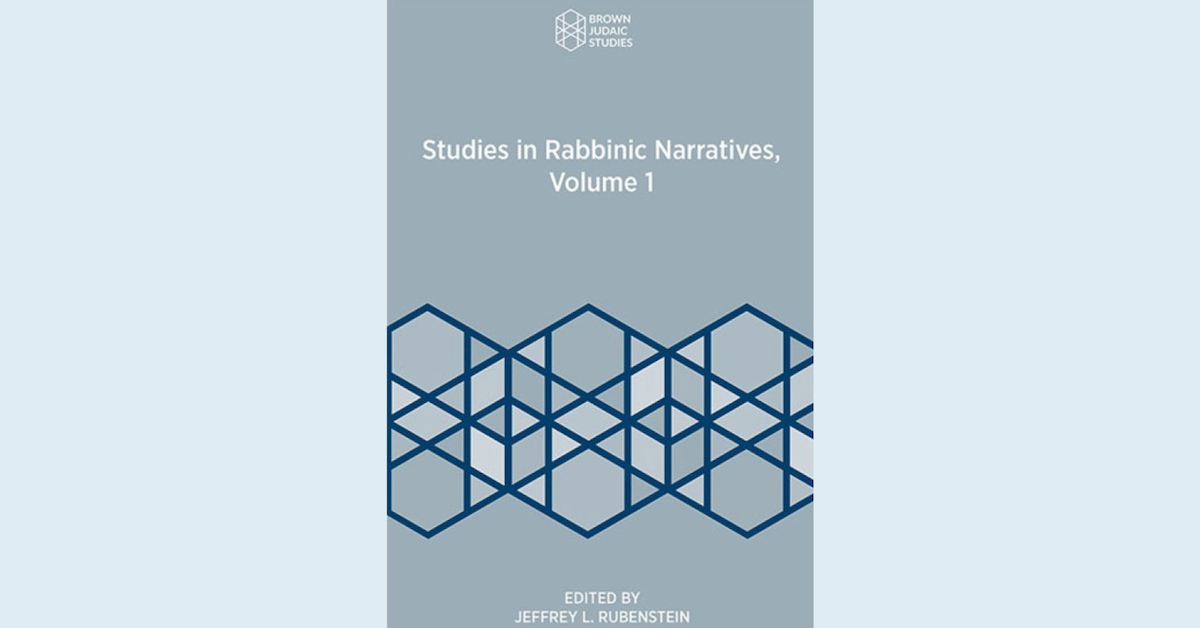Sep 13, 2022 By: yunews
Jeffrey L. Rubenstein | Brown Judaic Studies | 2021
Reviewed by Stu Halpern
In Studies in Rabbinic Narratives, Volume 1, Jeffrey L. Rubenstein, a professor at NYU and renowned scholar of the narrative art of the Talmud, has edited a wide-ranging and intellectually stimulating collection of analyses of Talmudic tales. In the volume, which emerged from a 2018 conference, Rubenstein charts a review of the field, from its history to possible future directions. In his comprehensive introduction, he sketches how scholars have utilized source and redaction criticism, comparative studies, cultural theory, and close reading tools to "add new theoretical tools and lines of analysis to the scholarship of the rabbinic narrative." The present volume contains, among other theoretical frameworks, feminist, structuralist, psychoanalytic, animal studies, and even Marxist readings of midrashim, the Mishnah, and the Gemara. Among the highlights of the book is Julia Watts Belser's analysis of the aggadic tale of the young woman of Sodom slathered with honey and consumed by bees as punishment for feeding a hungry man. Comparing that tale to Noah's midrashic struggle to feed the animals on the ark during the flood, she notes how both episodes imagine "hunger as an opportunity to exercise moral agency—recognizing both the perils and possibilities of hunger as a capacity that joins all creatures in the community of flesh." Her masterfully composed reading, drawing upon Persian execution methods, Christianity, folkloric tricksters, the history of lynching in the United States, and gender studies, concludes that in the rabbinic tale of murderous Sodomites, "animal hunger becomes a potent tool of human discipline. By inverting the conventional hierarchy of eater and eaten, the Sodom story blurs the usual lines between the species, making the animal the ravager of the human body... such species transgression becomes another sign of the depravity of the men of Sodom." Jay Rovner, building off the scholarship of David Henshke, offers a literary and cultural history of the "all night seder in Bene Beraq," one of the Passover Haggadah's most beloved anecdotes. Ultimately, through a comprehensive linguistic and narrative analysis and a comparison to other similarly-themed rabbinic stories, he concludes that the episode was written in Geonic times, and it is "unlikely" for it to have emerged from a rabbinic source and preserved solely in the Haggadah. Other chapters that will be of interest beyond specialists in the field include Rubenstein's own meta-analysis of the Talmud's story cycles and their internal coherence, Dov Weiss' unpacking of rabbinic perspectives on gentile damnation, which changed from emphasizing righteousness versus wickedness to Jew versus Gentile (and this shift being parallel in Christianity) and Barry Scott Wimpfheimer's argument against the perception that rabbinic pluralism was a historically, and even literarily, consistent perspective. Much of the history of the Talmud's composition has been lost to time. In a representative sampling of the struggle to uncover its redactional layers, Dov Kahane notes in his contribution that while the Talmud Bavli sugya seems to rework the sources found in the Talmud Yerushalmi, it is unclear whether editors of each respective Talmud worked from shared, common tradition or if the Babylonian editors possessed a version of the Yerushalmi. Even what might have been "possessed" is hazy. Were they oral traditions? Written? Both? What was the degree of their fluidity? While, as Studies in Rabbinic Narratives makes clear, we are far from gaining a full understanding of the Talmud's many layers of meaning, those interested in the academic study of Talmud can rest assured that rigorous and diverse scholarly efforts are being made to fill in the space between the lines. To read more Straus Center book reviews, click here. You can learn more about the Straus Center and sign up for our newsletter here. Be sure to also like us on Facebook, follow us on Twitter and Instagram and connect with us on LinkedIn.

